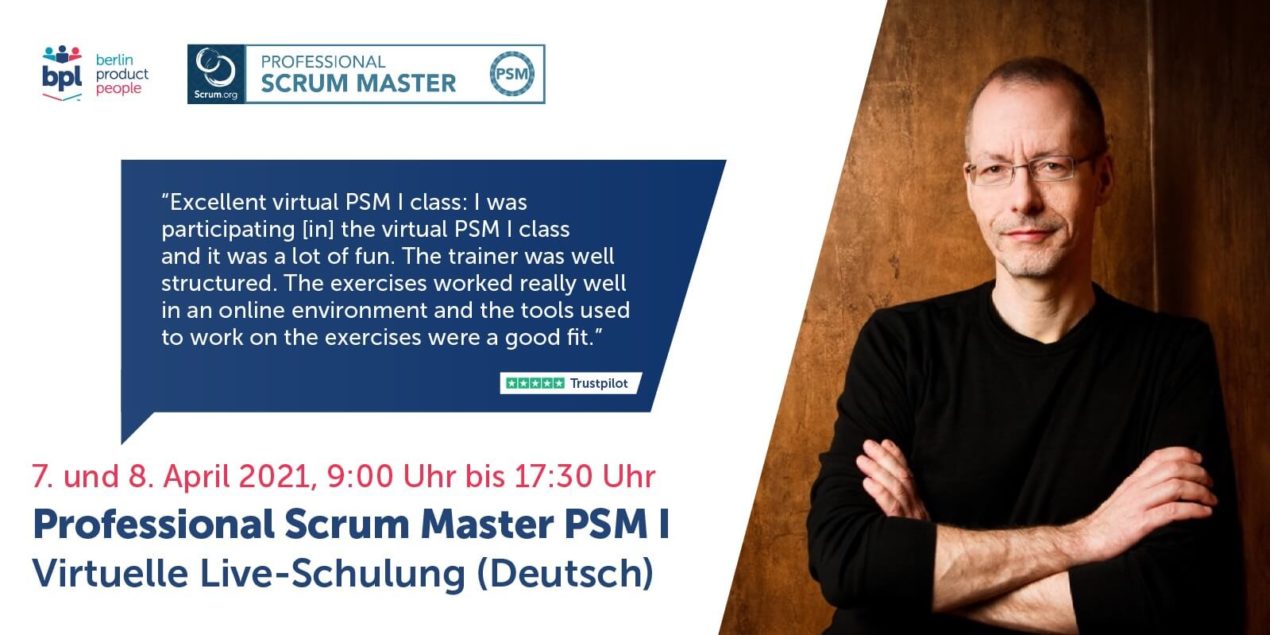TL; DR: Is Agile a Trojan Horse, Product Strategy Stack—Food for Agile Thought #283
Welcome to the 283rd edition of the Food for Agile Thought newsletter, shared with 30,593 peers. This week, we ask: Is Agile a Trojan Horse for change? We also enjoy the March 2021 edition of the Culture & Methods Trends Report, learning that COVID-19 was the biggest driver of culture change and that there are dramatic differences between good and bad remote work cultures. Moreover, we introduce a framework on strategic interventions when coaching agile teams.
We then introduce a product strategy stack, including product leadership experiences from Tinder, Facebook, TripAdvisor, and Airbnb. We summarize suggestions on setting practical Product Goals, and we discover an approach to Design Sprints that reduces its original time requirement from five days by 50 percent without sacrificing the outcome’s quality.
Lastly, we address wheel-spinning during transformations and how to overcome transformation theater and start delivering more value faster.

Did you miss the previous Food for Agile Thought’s issue #282?
🗞 Shall I notify you about articles like this one? Awesome! You can sign up here for the ‘Food for Agile Thought’ newsletter and join 30,000-plus other subscribers.
Join us on April 20, 2021, for a live virtual workshop on driving product innovation with the Zones of Value framework. (Participation is free.)
🏆 The Tip of the Week
(via InfoQ): 📖 Culture & Methods Trends Report March 2021
InfoQ provides the March 2021 edition of the Culture & Methods Trends Report, noting that COVID-19 was the biggest driver of culture change. Also, there are dramatic differences between good and bad remote work cultures.
➿ Is Agile a Trojan Horse & Scrum
: Agile’s Ethical Dilemma, Decision Distribution, and the Trojan War
Charles Lambdin delves into why so many agile transformations fail, asking if Agile is a trojan horse for change.
: The Holistic Observations of Teams Framework: Using Active Observations to Identify Strategic Interventions
Viktor Cessan introduces a framework on strategic interventions when coaching agile teams.
: Culture and Leadership: The Seven Domains of Transformation
IT Revolution reflects on why a product-centric operating model requires high levels of empowerment, collaboration, experimentation, and what leadership and culture have to do with those.
🎓 🖥 🇩🇪 Professional Scrum Master Training w/ PSM I Certificate — Live Virtual Class: April 7-8, 2021
Discover Scrum’s four success principles in this official Scrum.org Professional Scrum Master training class, leading to and including the industry-recognized PSM I certification. The training is designed as a live virtual class and will be offered in German.
Learn more: 📅 🖥 🇩🇪 Professional Scrum Master Training w/ PSM I Certificate — Live Virtual Class: April 7-8, 2021.
🎯 Product
(via Reforge): The Product Strategy Stack
Ravi Mehta introduces the product strategy stack, including product leadership experiences from Tinder, Facebook, TripAdvisor, and Airbnb.
: Product Goals in Scrum
Roman Pichler summarizes his suggestions on setting practical Product Goals, recently introduced with the Scrum Guide 2020.
(via InfoQ): Cut your Design Sprints in Half with these Key Tips
Haymo Meran shares his approach to Design Sprints that reduces its original time requirement from five days by 50 percent without sacrificing the outcome's quality.
🛠 Tools & Measuring
: The Metrics Of Digital Transformation
Barry O'Reilly addresses wheel-spinning during transformations and how to overcome transformation theater and start delivering more value faster.
(via Nielsen Norman Group): Getting Started with Journey Mapping: 27 Tips from Practitioners
Alita Joyce provides an excellent primer on setting yourself up for journey-mapping success by defining objectives, building a cross-functional team, and collaborating on the map.
📯 Peer Recruiting: How to Hire a Scrum Master in Agile Times
Peer Recruiting is the new hiring: Shortly, all creative, technology-based organizations will need to abandon the command & control structures that served the industrial world of the 20th century so well. Instead, they will reorganize themselves around autonomous teams to deal with the complexity and pace of innovation of the 21st century.
In such an agile world, recruiting will become a team decision, and the “human resources” department’s role will change into a supportive one. Recruiters will need to become servant leaders or facilitators, guiding the peer recruiting process.
The following guide to peer recruiting is based on my experience in participating in recruiting Scrum Team members over the last ten years. This first article will cover the Scrum Master role.
👉 Learn more: Peer Recruiting: How to Hire a Scrum Master in Agile Times.
📅 Scrum Training & Event Schedule
You can secure your seat for Scrum training classes, workshops, and meetups directly by following the corresponding link in the table below:
See all upcoming classes here.
You can book your seat for the training directly by following the corresponding links to the ticket shop. If the procurement process of your organization requires a different purchasing process, please contact Berlin Product People GmbH directly.
📺 Join 2,700-plus Agile Peers on Youtube
Now available on the Age-of-Product Youtube channel:
- 🆕 Scrum Guide 2020: Eight Remarkable Changes — Hands-on Agile #28.
- Remote Agile (1) Replay: Practices and Tools for Scrum Masters, Agile Coaches, and Product Owners.
- Scrum Sprint Retrospective Anti-Patterns.
✋ Do Not Miss Out and Ask: Is Agile a Trojan Horse — Join the 9,000-plus Strong ‘Hands-on Agile’ Slack Community
I invite you to join the “Hands-on Agile” Slack Community and enjoy the benefits of a fast-growing, vibrant community of agile practitioners from around the world.
If you like to join all you have to do now is provide your credentials via this Google form, and I will sign you up. By the way, it’s free.








